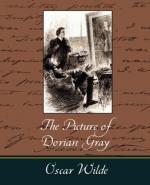“Inquest on an actress.—An inquest was held this morning at the Bell Tavern, Hoxton Road, by Mr. Danby, the District Coroner, on the body of Sibyl Vane, a young actress recently engaged at the Royal Theatre, Holborn. A verdict of death by misadventure was returned. Considerable sympathy was expressed for the mother of the deceased, who was greatly affected during the giving of her own evidence, and that of Dr. Birrell, who had made the post-mortem examination of the deceased.”
He frowned slightly, and, tearing the paper in two, went across the room and flung the pieces into a gilt basket. How ugly it all was! And how horribly real ugliness made things! He felt a little annoyed with Lord Henry for having sent him the account. And it was certainly stupid of him to have marked it with red pencil. Victor might have read it. The man knew more than enough English for that.
Perhaps he had read it, and had begun to suspect something. And, yet, what did it matter? What had Dorian Gray to do with Sibyl Vane’s death? There was nothing to fear. Dorian Gray had not killed her.
His eye fell on the yellow book that Lord Henry had sent him. What was it, he wondered. He went towards the little pearl-colored octagonal stand, that had always looked to him like the work of some [64] strange Egyptian bees who wrought in silver, and took the volume up. He flung himself into an arm-chair, and began to turn over the leaves. After a few minutes, he became absorbed. It was the strangest book he had ever read. It seemed to him that in exquisite raiment, and to the delicate sound of flutes, the sins of the world were passing in dumb show before him. Things that he had dimly dreamed of were suddenly made real to him. Things of which he had never dreamed were gradually revealed.
It was a novel without a plot, and with only one character, being, indeed, simply a psychological study of a certain young Parisian, who spent his life trying to realize in the nineteenth century all the passions and modes of thought that belonged to every century except his own, and to sum up, as it were, in himself the various moods through which the world-spirit had ever passed, loving for their mere artificiality those renunciations that men have unwisely called virtue, as much as those natural rebellions that wise men still call sin. The style in which it was written was that curious jewelled style, vivid and obscure at once, full of argot and of archaisms, of technical expressions and of elaborate paraphrases, that characterizes the work of some of the finest artists of the French school of Decadents. There were in it metaphors as monstrous as orchids, and as evil in color. The life of the senses was described in the terms of mystical philosophy. One hardly knew at times whether one was reading the spiritual ecstasies of some mediaeval saint or the morbid confessions of a modern sinner.




